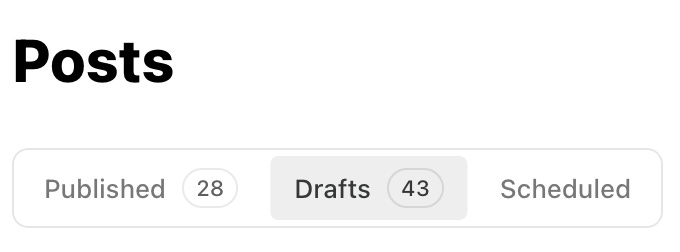Is there an emoji for my vagina?
Introducing Gina as I continue to expand my emotional vocabulary
After a recent conversation with a friend about how I was feeling, as I was recovering from a minor gynaecological procedure, I responded to her voice note by pretending to be my vagina, who I’ve always referred to as Gina. This became an amusing back and forth, as she conversed with Gina via a return voice note.
And just like that I felt a new inner voice emerge who started advocating for my vagina’s digital rights. Gina was keen to know what the emoji was for a vagina and nudged me to ask a number of people which emoji they use for this purpose.
Before I reveal what Gina’s research uncovered about the potential vagina emoji options, I’d like to share more with you about my journaling rituals and how this relates to the concept of inner voices.
Once you’ve read this update, I’d love your thoughts on what it’s brought up for you.

The Role of Journaling
Creating space in my week to write in my notebook has become the gateway to most confessions that are published here as essays. A single headline will reveal itself, or multiple ideas I’ve been thinking about will merge into a broader theme.
My journaling ritual begins in a few ways. Sometimes I reflect on the best, or worst, event from the previous day. Occasionally I will feel the need to unravel a thread of an idea or a project and my notebook becomes the place where I can begin to map out the different components I’ve been ruminating over. Writing in my notebook helps me pursue certain ideas with curiosity, and can also help me lay other ideas down to rest.
The act of expressing myself by putting a pen to paper offers a tranquil moment before my work day begins. It is my companion during the necessary solitude I can sometimes ache for in a home with limited feminine energy. Even the dog and cat are males!
On some occasions it takes me longer to make my way to meaningful reflections. This can occur when I haven’t written in my notebook for a few days or it’s been a particularly busy work week. In these moments I may revert to my teenage ‘dear diary’ ritual, and write about what I’ve been doing, rather than the exploration of what I really want to say. I am kind to myself when this happens, and feel grateful for the ritual of writing to help me recognise these patterns.
When I spend time in the garden, my notebook reflections seem to grow in strength, and will sometimes urge me to dash inside to draft a headline for a Substack post, based on an idea I’ve been exploring.
I currently have 43 seedlings draft posts growing in my Substack garden.
The role of my inner voices
When I talk about my inner voices there are two dimensions to this. It’s the thoughts in my head that represent the different parts of my subconscious, and it’s also a felt sense in my body. This is a physical, bodily awareness of a situation, person, or event, indicating an inner knowing or intuition.
It seems I share this inner monologue with Arwa Mahdawi, Guardian journalist and author of Strong Female Lead, who explores this concept in Is it true that up to half of people have no inner monologue? Mahdawi writes -
This inner voice isn’t a bad thing per se; often it’s useful, occasionally it’s entertaining. Sometimes it’s annoying as hell, though: it keeps me up at night replaying past conversations I’ve had and coming up with all the things I should have said. When things get stressful – and the world has been very stressful lately – then all this inner chatter can get very overwhelming.
I was introduced to my inner voices as part of a fun and creative process that I invested in during Melbourne’s 262 days of cumulative lockdown. This was an online program that ran from August until November, 2021. It’s loosely based on the idea of Internal Family Systems (IFS) therapy; a model of psychotherapy that views the mind as composed of various "parts" or sub-personalities, each with its own unique role and perspective. IFS aims to foster inner harmony and healing by understanding and connecting with these parts.
The Inner Voices program offered an alternative to the grief counselling I’d commenced in January, 2020. I felt very drawn to working with the Creative Coach, Tali Brash, who designed and delivered this opportunity to step outside of my emotional comfort zone. I first met Tali when I attended her weekly online guided meditations for One Roof from mid 2020.
Tali’s focus on creativity as a path to healing was equal parts fun and confronting. In preparation for meeting my inner voices I bought a set of props from her list of suggested items, including a scarf, mirror and small glass bottle.
Each week, I was introduced to a new voice within myself, brought to life through a combination of reading materials, online tutorials, journal prompts, and guided meditations. To embody and express each voice, I produced a creative offering - usually a song or skit - which I recorded and submitted to Tali. We would then meet for an hour over Zoom to reflect on the experience and explore what I had uncovered about myself. I gave each voice a name that I felt reflected their distinct qualities.
Clara represents my fear voice and wishes I was more sensible. She tries to shame encourage me to focus on household duties; activities that are more aligned with her values as a 1950s housewife. She’s always reminding me to be careful and tries to nudge me to warn anyone who’ll listen about the imminent dangers of leaving food out of the fridge for too long, crossing the road, driving a car or travelling alone at night.
Clara doesn’t understand why I enjoy my work so much. She wishes I’d spend more time cleaning the house and resents that I pay a cleaner to vacuum, mop the floors and clean the bathrooms. This inner voice may explain my love of visiting op shops and collecting random vintage kitchen items from the era she harks from.
Tina represents my doer voice and she loves that I’ve stayed on the denial channel for so many years. This has allowed her to dominate so much of my adult life. Her motto is ‘if you want something done, give it to a busy person’.

It is deliberate that I’ve only shared a few lines about Tina. Anything more, and she’ll somehow manage to take over and edit this confession.
Sylvia represents my shadow voice and there is a physicality to her presence that I feel in my throat, and can make it hard to swallow. I’ll experience a tightening around the front of my neck when she has something to express, and it almost feels like I’m being strangled. While her goal may be to protect me, Sylvia’s thoughts are simultaneously shocking and amusing.
I’ve learnt to thank Sylvia for her contribution, while reminding her that ‘I’ve got this’. Sylvia does not recognise the power of remaining silent in response to antagonistic comments. This is the inner voice who believes ‘how does get f**cked sound?’ is a suitable response when I hear a sexist, racist or unbelievably stupid statement.
There is nothing gentle about Sylvia. She does not hold back and used to constantly nudge me to engage in hurtful verbal jousting. She preferred it when I placed value on winning an argument and raising my voice to make a point. I’ve thanked Sylvia for her protection, reassured her that not engaging in meaningless banter is a form of action and asked her to make room for my True Voice, KPH.
Petunia represents my inner child and when I was first preparing to meet this inner voice my notes from the journal prompts indicate I felt a bit tentative and nervous about activating this voice. I wrote -
Is she okay? Why can’t I remember much about her? Is she safe? is she feeling loved? What does she need from me? Perhaps she’s the 3rd child I never had because of Mum’s dementia.
I credit Petunia for a random purchase of a woollen rug that I love to use when I occasionally have an afternoon kip. This rug offers a wonderful form of comfort and self love when I’m feeling overwhelmed.
Do you ever have the desire to curl up in bed and sleep away the feeling of overwhelm? This is a feeling that can occasionally sweep over me in response to the busyness of a week filled with more socialising than usual. I lie on my bed, place the rug on my body and close my eyes to rest for an hour or so.
There’s a part of me who hopes that one day I’ll replace these naps with a run or fast walk. Perhaps that last line was Tina trying to break through the character limit I imposed on her. Since reading this update from
, I’m also thinking a dip (in the ocean or river) offers an alternative to the kip.By the end of the Inner Voices program I had folded my internal family members into my weekly structured journaling ritual with
. Each of these voices has a dedicated coloured pen as a way to allow them to be part of my journaling process, when the need arises.Introducing Gina

I chose this picture to represent Gina for a number of reasons, particularly because of the shape that’s formed with her hands as she carefully holds the soil.
Gina discovered there is an official and unofficial answer to her question - Is there an emoji for my vagina?
What was interesting about the responses to Gina’s research was that the eggplant came to mind very quickly for most people (for a bloke’s appendage), but there was no equivalent fast recall or alternative offered to represent Gina. There was a ‘maybe this’ or ‘perhaps that’ but nothing as definitive as the eggplant.
Gina particularly enjoyed Lux Alptraum’s take on this topic, which I’ll refer to as the unofficial answer to Gina’s question. Lux is the author of Faking it, and her commentary has been featured in a wide variety of outlets including The New York Times, Cosmopolitan, and Hustler.
In the 2015 article for VICE magazine, What’s the Best Vagina Emoji?, Alptraum offered a variety of alternatives for emojis that can be used to represent the vagina. These suggestions may encourage you to re-think your use of the cat, peach, flower, honey pot and prayer emojis in future text messages.
The official answer uncovered by Gina is the image below.
This is an open source option via iconduck that’s available as a download, not as a default emoji on your device.
Your invitation to be curious
I’m imagining there’s a part of you that’s feeling curious about the idea of your own inner voices, or the ‘constant inner monologue’, as Arwa Mahdawi calls it.
Maybe you’re already familiar with Internal Family Systems (IFS) therapy.
Or perhaps you recognise parts of yourself in some of these narratives, and you’re beginning to reflect more deeply about your emotional outbursts, random interests or purchases that may be an indicator of unprocessed emotions circling you.
There are a few reasons why I’ve enjoyed being curious about getting to know the different parts of myself. The reality is that I’ve spent most of my adult life stuck on the denial channel I mentioned when I described Tina. This channel is the one where I subconsciously ignored the emotional pain I experienced as a teenager in relation to the circumstances leading to my parent’s divorce.
At the time of these events I did not have the emotional vocabulary, nor the guidance from a mentor or parent, to understand the importance of naming the emotions I was feeling. It was the early 1990s, when the mental health system was only just starting to transition from '“mental hygiene to community health1” and so we soldiered on. We didn’t talk about the emotional discomfort that came with this disruption to our lives.
I focused on my education, successfully completing my last year of high school and getting into university. I was determined to prove that these unwelcome family circumstances would not hold me back from reaching my full potential.
Expanding my emotional vocabulary
This is the part where I try to reassure you that I’m broadly okay. My True Voice, KPH, feels a strong desire to mention this because we’ve been exploring writing for therapy and my inner voices. It’s a lot and I acknowledge it may be triggering.
But here’s the thing. I don’t know what I don’t know, and as I expand my emotional vocabulary and learn about channels other than denial, I am discovering my blindspots.
Dealing with the death of my Mum, after having to watch her slow and inevitable deterioration over 10 long years, unlocked the grief channel. I had a false start with grief counselling soon after she passed away at the end of 2019. You may remember the March 2020 article by Scott Berinato, published in Harvard Business Review, That Discomfort You’re Feeling Is Grief. I felt overwhelmed by the grief we were all feeling. It was heavier than everything else I was having to process at the time and online counselling felt redundant.
Despite, or perhaps because of, what life has thrown at me, I’ve managed to honour the commitment I made to myself when I decided to get on with my education. This year I am celebrating 25 years of marriage. My husband and I are incredibly proud of our two wonderful sons, and I’ve worked very hard to craft a life with a satisfying career that enables me to work and volunteer. I enjoy spending time with my family and friends, gardening, reading, writing and travelling; when the budget and time allows.
Tali, the Creative Coach I mentioned earlier, who led me through the Inner Voices program, has become a dear friend and is the person who inadvertently helped me ‘activate’ Gina during the voice note exchange I described at the start of this confession. When we catch up for a meal or leave voice notes for each other, we discuss the ups and downs of life and adopt the tone of voice and characteristics of some of our inner voices. It’s no surprise, and lots of fun, when they try to insert their perspectives into our conversations. Tina loves to offer Tali advice and encouragement!
For many years I’ve viewed my emotions as something that resided outside of my body; a group of people I could invite into the conversation when I felt ready. I do not think I’m alone in once describing my emotions in this way. Thanks to the work I’ve done with Tali and the work I continue to do, it feels like I’m getting to know my inner family. There are a number of kinder inner voices who you may meet in future updates.
I like to imagine that my True Voice, KPH, is at the wheel of our family camper van, and my inner voices are passengers who are there to warn me of upcoming hazards that we may or may not encounter on the road ahead. They’re quieter these days, as long as I remember to honour their presence in my notebook, and occasionally feature them here on Substack.
You can listen to more of my journey in Getting to Know My Emotions, a podcast episode from a passion project with my co-host, Louise Weigall, that we recorded together in 2021. This conversation captures an important point in time when I began to connect the dots from activating my inner voices.
With love and gratitude,
KPH
I acknowledge the Traditional Owners and Custodians of the lands on which I live and pay my respects to Indigenous Elders past, present and emerging. Sovereignty has never been ceded. It always was and always will be, Aboriginal land.
From Mental Hygiene to Community Mental Health (March, 2020) by Belinda Robson, originally published in The Journal of Public Record Office Victoria, issue no. 7, 2008. ISSN 1832-2522. Copyright © Belinda Robson.









Thanks for such a though provoking and vulnerable post. I recently discovered that some think an avocado sliced in half is the female version of the eggplant emoji :-)
this is my favourite thing I have read of yours to date.